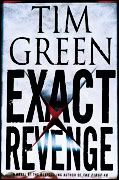review - the facts behind the helsinki roccamatios
“The Facts Behind the
By Yann Martel
(Harcourt)




Nearly ten years prior to Life of Pi’s release to wild acclaim stateside, Booker Prize winning novelist Yann Martel published a collection of short stories in his native
The four stories vary in style and length, from the titular novella “Roccamatios” to the concluding “The Vita Aeterna Mirror Company,” which upon first inspection, appears to be written in verse.
In the titular offering, a young man finds himself companion to a young man who is dying of AIDS. Despite being written ten years ago, when the AIDS epidemic was perceived very differently, the tale stands out as one of human joy and suffering, not of educating and preaching, as many stories of the early 90s do. “Roccamatios” is not an AIDS story, it is a story of anyone who is trying to give meaning to a life that is ending.
“Manners of Dying” explores one theme over and over: a letter from the Warden to a death row prisoner’s mother, describing her son’s last hours. In similarly structured yet vastly different and (apparently) randomly numbered “manners” that give the sense of stretching to infinity, Martel explores not only one man’s last hours, but many facets of human reaction when faced with death.
The whimsical “The Vita Aeterna Mirror Company” is a lyrical tale of a callow young man who does not appreciate his grandmother, until he discovers an almost magical secret buried in the mirrors in her home.
Arguably the strongest story in the collection, “The Time I Heard the Private Donald J. Rankin String Concerto with One Discordant Violin, by the American Composer John Morton” evokes Salinger at his best. A young Canadian man visiting an unseen friend in Washington D.C. happens upon an imperfect, yet, to his ears, divine orchestra, the singular work of a Vietnam veteran, and reaches a quiet epiphany about everyday life – “why [don’t we] ask for more?” With this story, and with all in the collection, Martel perfectly portrays the aimless drift that haunts many young people, and for a moment, gives his characters - as well as his readers – purpose and understanding.
It is clear that Martel’s writing has matured in the time since these stories were originally written, but the reader should not be dissauded. Although no story in this collection reaches the fluid style of Life of Pi, all are works that showcase the young author’s creativity and potential. Even if a reader had never heard of Martel’s famous novel, after reading “The Facts Behind the Helsinki Roccamatios” they would know they were in the presence of a remarkable talent.



0 Comments:
Post a Comment
<< Home